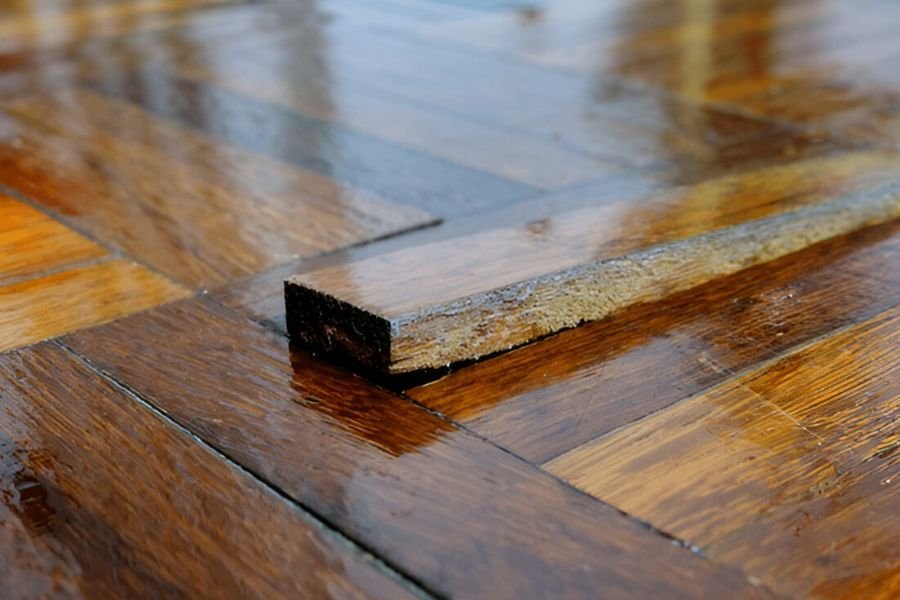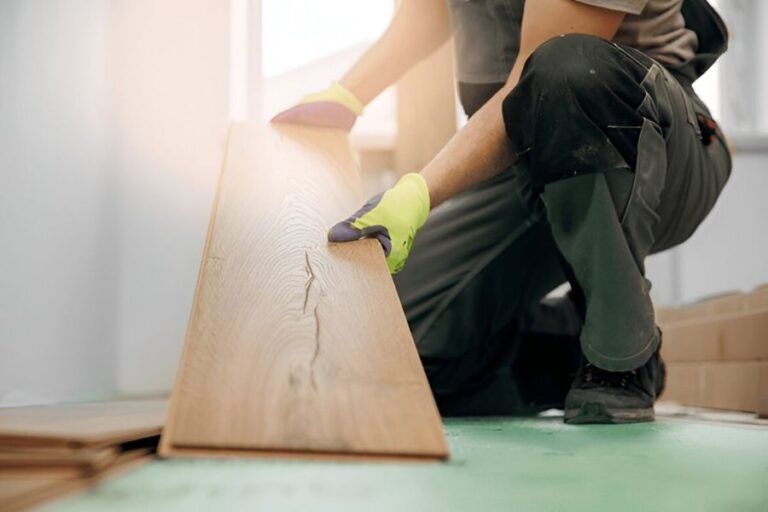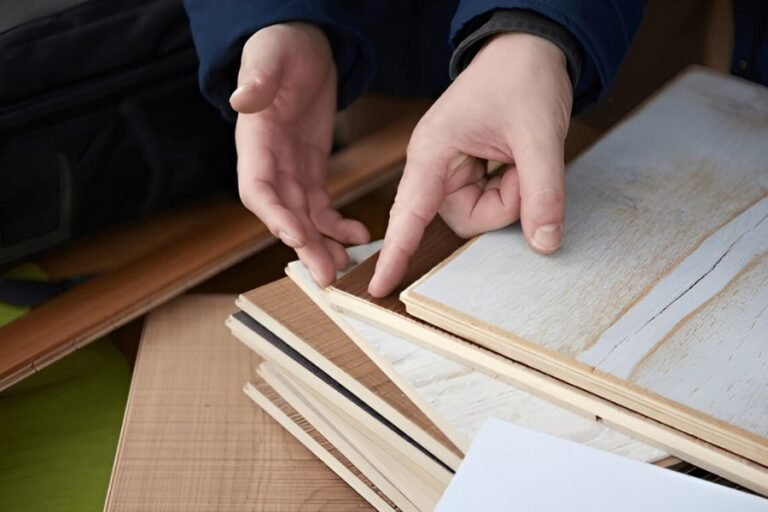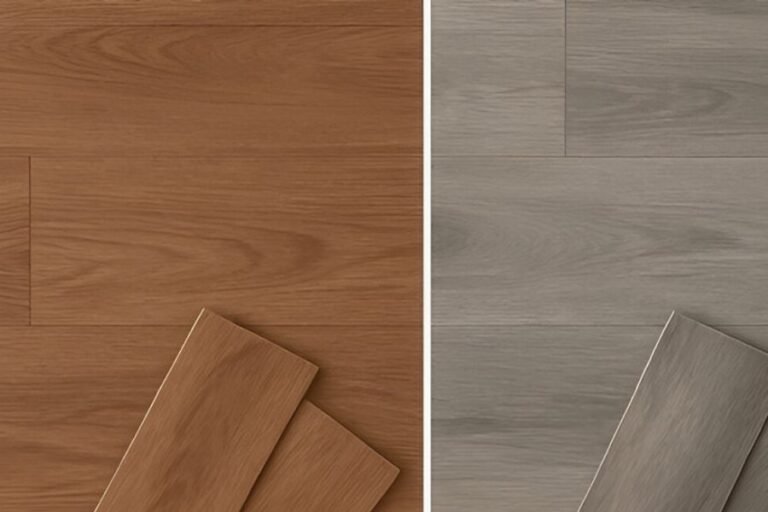Floors aren’t just surfaces we walk on, they anchor the look, feel, and safety of every room. Over time, though, even the most durable flooring shows its age. What starts as a minor scuff or squeak can slowly turn into a visual and structural problem. Knowing when it’s time for floor repair and replacement in Fort Myers, FL, can save you from bigger headaches, and costs, down the road.
If your floors are starting to whisper (or shout) that they need an upgrade, here are seven red flags worth paying attention to.
Table of Contents
ToggleIs Your Flooring Trying to Tell You Something? 7 Warning Signs You Shouldn’t Ignore
Your floors may look fine at a glance, but underneath, they could be hiding serious issues.
From cracks to creaks, here’s when to consider floor repair and replacement in Fort Myers, FL.
1. Visible Cracks, Chips, or Gaps
Whether it’s hardwood, laminate, or tile, physical damage is one of the most obvious damaged floor indicators. Gaps between planks, cracked tiles, or chipped surfaces not only detract from appearance, they also signal structural wear or moisture problems underneath.
Often, small cracks can spread without warning, especially in high-traffic areas like hallways or kitchens. If repairs feel more frequent than functional, it may be time to consider a full floor repair in Fort Myers, FL.
2. Stains That Just Won’t Budge
Some stains have staying power. Older carpets, porous stones, and worn finishes can trap odors, discoloration, and grime that cleaning simply can’t fix.
In many cases, especially with synthetic or low-quality materials, persistent staining is one of the most common signs of wear and tear on flooring. If certain spots never look clean, no matter how much scrubbing, they’re probably telling you it’s time to let go.
3. Squeaks, Creaks, and Loose Boards
It’s one thing to have the occasional noisy step. But consistent creaking or movement often points to deeper subfloor issues. Wood flooring may become loose over time, laminate planks may shift underfoot, and nails or adhesive may fail altogether.
This isn’t just annoying, it can be dangerous. Uneven floors increase the risk of tripping, especially for children or older adults. When creaks are coupled with movement or softness, a floor replacement checklist should follow soon after.
4. Water Damage or Warping
Florida homeowners, in particular, know how subtle water damage can be. Warped vinyl planks, swollen laminate, or hardwood boards cupping at the edges are clear signs of long-term moisture exposure.
While some individual pieces may be swapped, widespread water damage usually calls for full replacement. It also presents a health risk, moist subfloors can harbor mold and bacteria, both of which hide under aging surfaces. Add this to your list of old flooring problems that shouldn’t be ignored.
5. Outdated Look and Feel
Design trends change, but comfort and lifestyle should always stay current. If your floors were installed in the early 2000s, or earlier, they may feel out of sync with today’s materials, technologies, or style.
Modern flooring is more durable, more water-resistant, and easier to maintain. Upgrading isn’t just about looks, it’s about quality of life. This is where updating flooring tips come in: consider LVP for durability, tile for coastal zones, or engineered wood for elegance without the upkeep.
6. Allergy or Respiratory Issues
Older carpets and flooring adhesives can trap allergens, pet dander, or VOCs (volatile organic compounds) that affect indoor air quality. If allergies worsen indoors, or never seem to go away, your floor could be part of the problem.
Dust mites love worn carpet fibers. Subfloor mold grows in silence. If deep cleaning hasn’t made a dent in your symptoms, a floor repair and replacement might not just improve your interiors, it could improve your health.
7. Loose or Peeling Finishes
Peeling vinyl corners. The tile grout is flaking off. Scratches that wear straight through the finish. These all signal that the floor’s protective barrier has broken down.
Once that top layer is compromised, the material underneath begins to deteriorate faster. In humid areas or homes with pets, these exposed surfaces age rapidly. Don’t wait until damage spreads, this is one of those damaged floor indicators where early action saves serious money.
Final Word: Don’t Let Your Floor Decide for You
Floors carry the daily weight of our lives, literally. Ignoring the signs of wear won’t make them go away, and delaying action can turn minor issues into expensive repairs. Recognizing when floor repair and replacement in Fort Myers, FL, is the smarter move doesn’t just protect your investment, it renews the foundation of your home.
Whether you’re dealing with warped hardwood, buckling laminate, or dingy carpet that no longer lifts the room, it may be time to step into something new.
Need guidance on where to begin? Start with a professional inspection by Shane’s Floors of Florida, or use a floor replacement checklist to evaluate damage and longevity. Sometimes the floor isn’t just tired, it’s telling you something. Contact us for more information and guidance.
Frequently Asked Questions
Q1. How does Fort Myers’ coastal climate affect different flooring materials?
Ans: The humidity and salt air can warp hardwood, loosen laminate, erode grout in tile, and trap moisture in carpets, making waterproof options like LVP or porcelain tile more reliable.
Q2. What hidden costs should I expect during floor replacement?
Ans: Common hidden costs include subfloor repairs, furniture moving, trim replacement, and disposal fees for old flooring materials.
Q3. Does new flooring increase home value in Fort Myers?
Ans: Yes, especially in competitive markets. Updated, water-resistant flooring appeals to buyers and can boost resale value and marketability.





